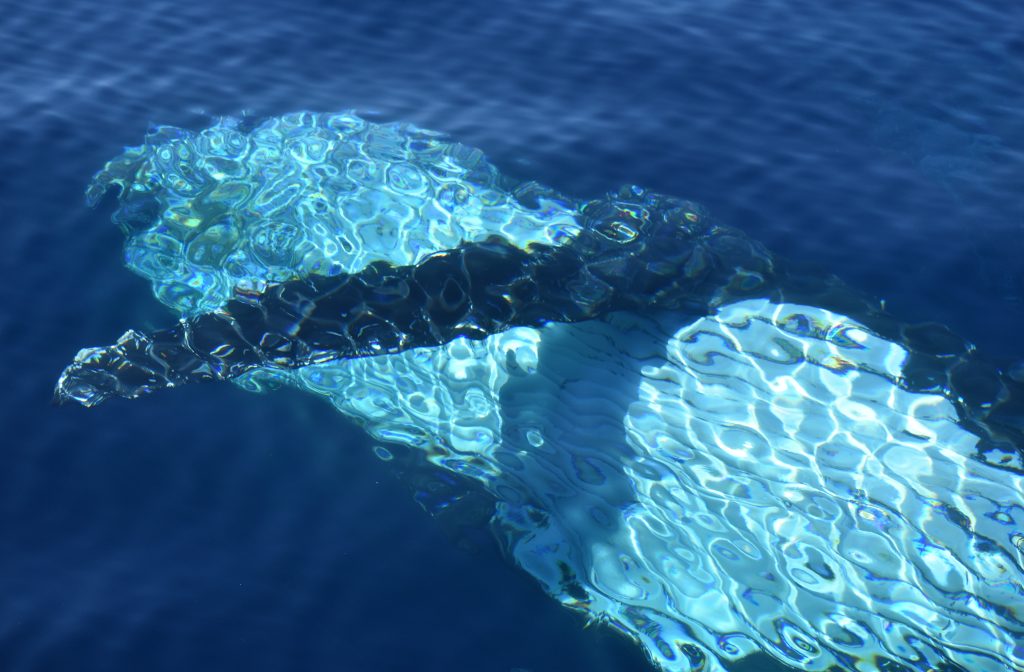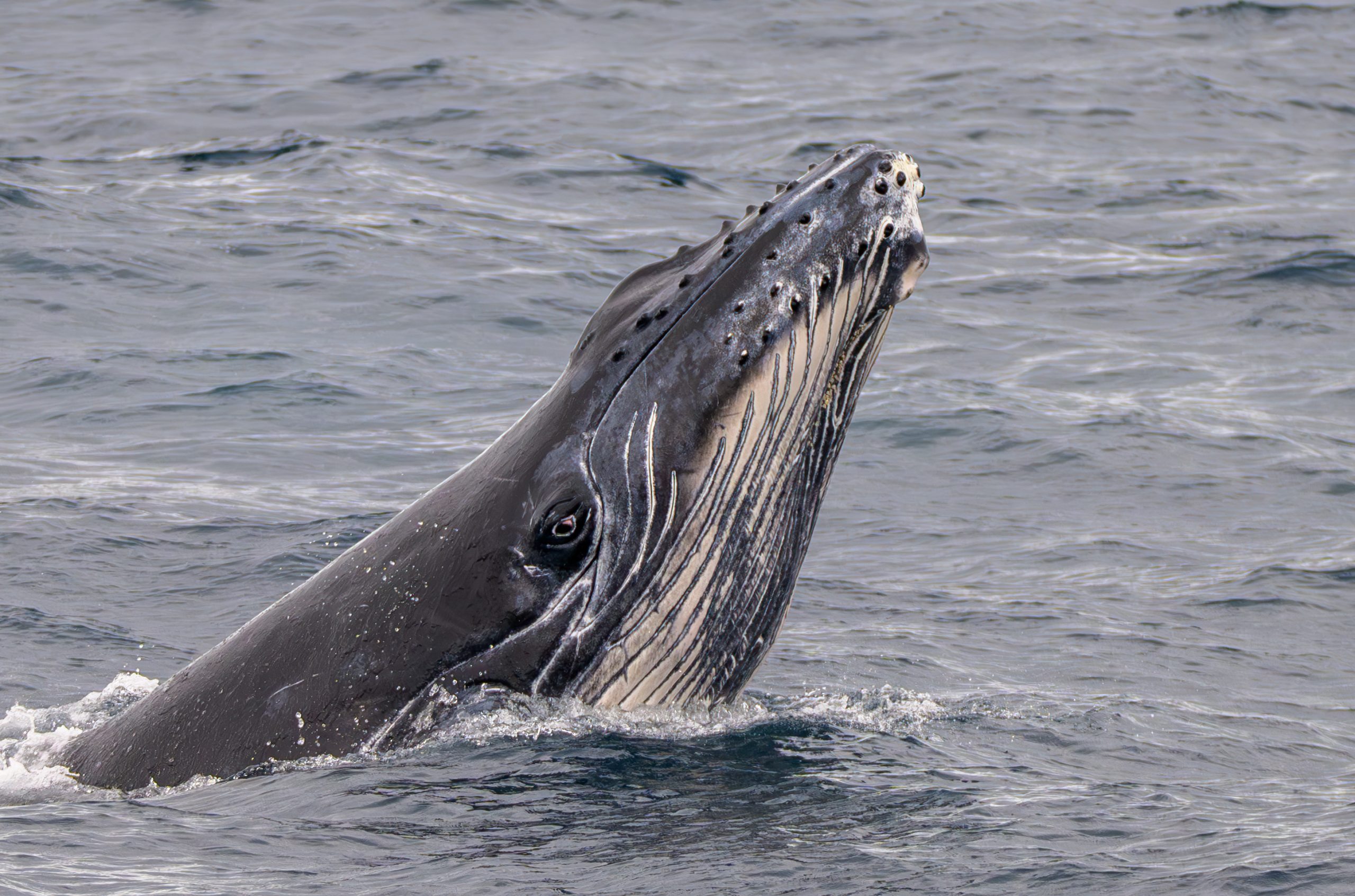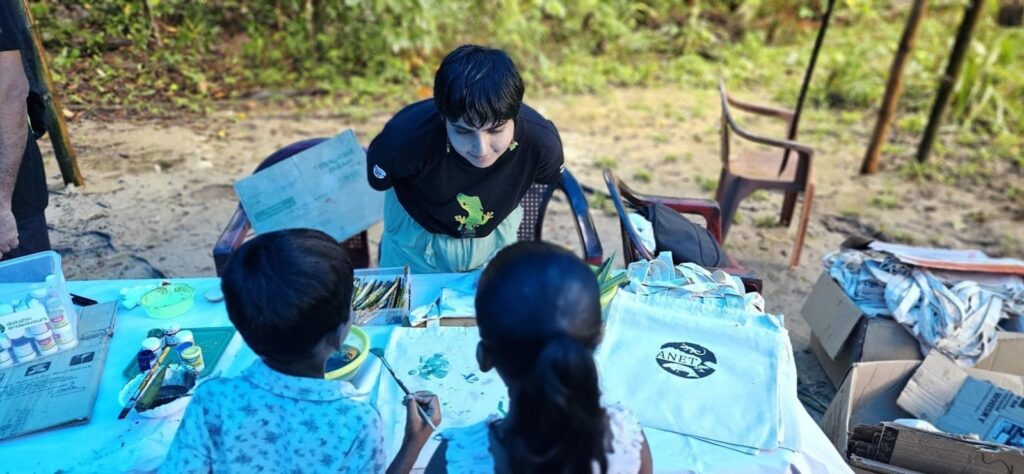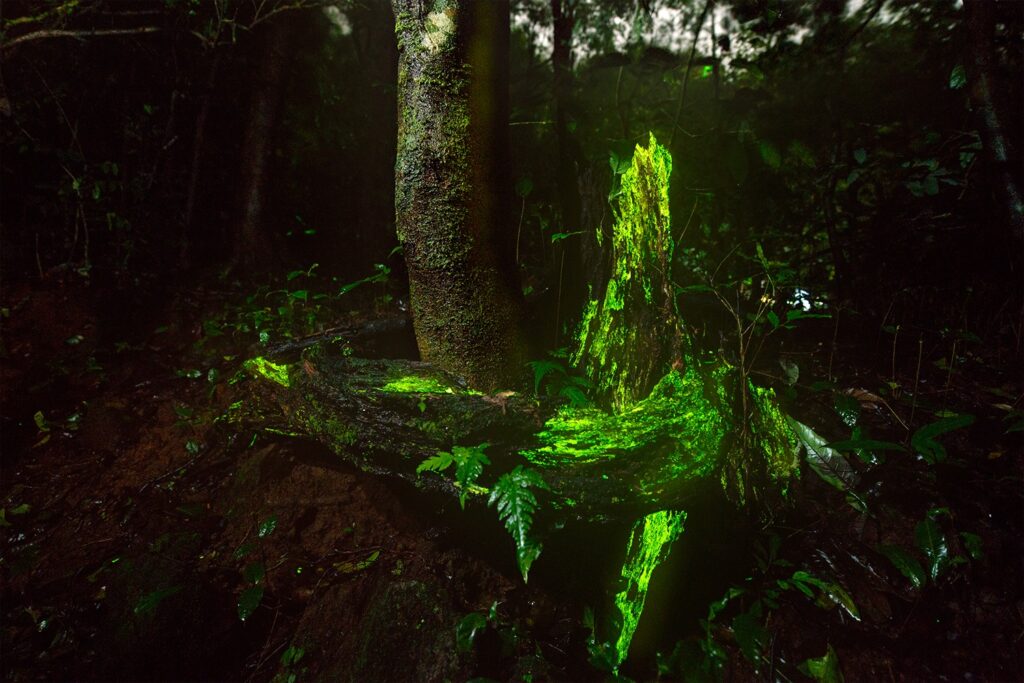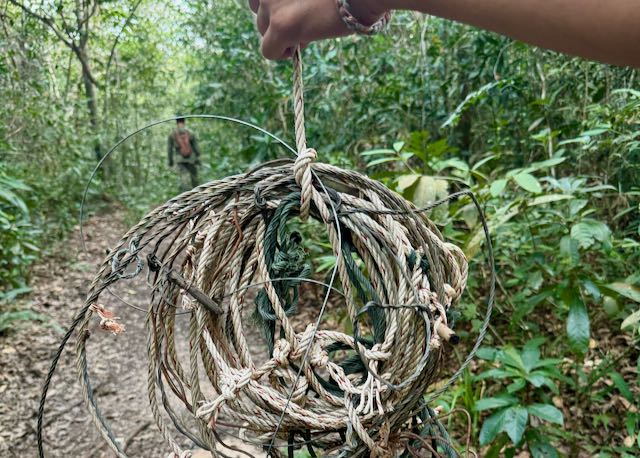Feature image by Geoff Richmond
Working on a whale-watching vessel as a tour guide and researcher, you never know what you’re going to see each day. Some days can be absolutely amazing and other days can be hard work in bouncy conditions. Departing from the Southport Seaway, our state-of-the-art catamaran the Spirit of Migaloo went in search of migrating humpback whales in the Gold Coast Bay, Queensland. It was a lovely, bright sunny morning in July, and the winds were low, and the waters were calm and smooth. We had no idea what enthralling encounter would await us but knew that we would see pods of humpback whales on their long migration past the east Australian coastline.
Marine inspection
After travelling a short distance offshore, we were soon greeted by the blows and spouts of the whales in a classic V shape shooting high up into the air. The sound of a whale blow is very distinct and sounds like a loud “whoosh”. It’s something that always makes us happy as we begin our visit with these magnificent creatures. We had found our first pod of humpback whales!
After observing them and comparing their overall length against the length of our hull, we could tell that these whales were ‘juveniles’—not quite fully grown adults, more like young teenagers. Juveniles are not yet involved in the mating activities that older whales engage in and can be a bit playful and sometimes come over to the boat and take a quick look. Today, however, as the whales approached the vessel, they didn’t just swim past us closely and continue on their way, but instead chose to come up to the boat and give us a thorough inspection.
We turned off our engines to ensure their safety near us, and they continued to swim very close and kept approaching the vessel. We were getting ‘mugged’! Mugging is a term we use to refer to these very close and sustained intentional approaches to vessels by whales. The whales remained alongside the vessel and began looking at us—first lying on their sides and then bringing their entire heads (or rostrum) out of the water so that their eyes could look intently at the boat and passengers. This behaviour is what we call a ‘spy hop’, allowing them to focus their eyes and see clearly above the water. It’s a rare treat to be eyeballed by a whale, to capture their curiosity, and to become the focus of their large, curious brains.
Next, the whales began diving under the boat in what seemed like a game, diving under the port side and swimming right under our hull, and then popping up along the starboard side. Then they would swim under the boat and appear at the stern, lifting their enormous heads clear out of the water, gazing at us intently, before slowly sliding back below the surface. They were checking us out from every position, then diving under the boat and popping up in front of the bow.
Each time they returned to the surface, their loud blows would startle us and everyone on the boat was covered in whale blow—something we refer to as a ‘whale blessing’! It seemed to us that they didn’t want to leave. This encounter involved the whales repeatedly approaching the vessels and remaining with us for more than 40 minutes, continually diving under the boat, popping up along the sides, spy-hopping and lying belly up just under the water’s surface. They appeared not only curious but also exhibited a degree of comfort with the boat. If they were frightened or afraid of the vessel, they certainly would swim away, not lie belly-up next to the boat, which is a very vulnerable position.
Humpback whales are known to be among the most intelligent of all animals, and are sentient or self-aware, possessing large, complex brains with a lot of grey matter to enhance their capacity to store data. Such big brains are capable of well-developed curiosity, advanced wayfinding and navigation, feeling a range of emotions, and engaging in these ‘mugging’ behaviours.
We are researching the phenomenon of mugging and what behaviours occur during these encounters. Will we ever know why the whales perform this activity? Why are they approaching boats? Are they seeking out the company of humans? That may be a question we leave to the AI experts, but it may have elements of curiosity or boredom or a social component between the whales themselves.
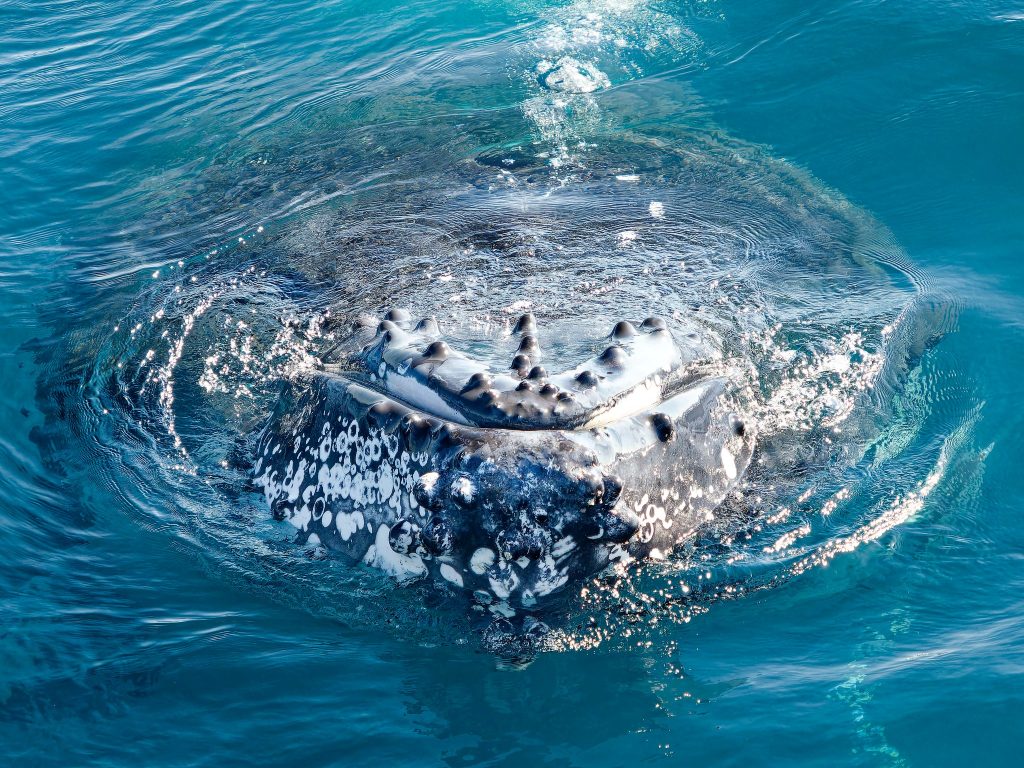
Understanding whale behaviour
Many studies of whales and dolphins discuss how harmful interactions with vessels can be for them. Many research articles cite vessel noise to be intrusive and bothersome. Ship strikes can be possible from proximity to rotating propellers. These impacts are real because their sense of hearing is both sensitive and critical for their survival. Their skin is delicate and soft, and we have seen many, many whales bearing horrible injuries, wounds, and scars from propeller strikes. Boats can attain fast speeds, leaving little time for whales to get out of harm’s way, and this is a great concern for our marine species. We have the utmost respect for this body of research and the dedicated researchers performing these critical studies.
All that being said, we have whales approaching and remaining with vessels intentionally, on purpose and out of their own free will at this study site. We view this as a learning opportunity, and we conduct research every time these encounters occur. We are slowly learning about what happens during a mugging and are documenting the discrete behaviours exhibited by the whales. So, here’s what we’ve learned so far on the Gold Coast over five years of studying mugging encounters.
First, these encounters can be fleeting and brief or can have a long duration. Most muggings in our study lasted 15 minutes, but some went on for over 40 or 50 minutes. In some cases, the vessel was unable to start its engines and leave because the whales were surrounding the boat so closely that it was unsafe to do so. The intensity level of the mugging can range from low intensity (brief encounters) to high intensity sustained encounters, where the vessel is almost held captive by the whales.
We’re also learning that it’s not just the juveniles that are exhibiting this mugging behaviour, sometimes it’s mixed groups of juveniles and older whales, and other times it’s a group of all adults. Very occasionally, we have observed mothers with calves approaching the vessel and remaining alongside the boat or diving under the vessel. Our data suggest that several different age classes engage in mugging activity at this location.
While there is no specific group size for a mugging, they often involve two to three whales together, but occasionally up to five animals can be present around the vessel. Also, sometimes whales interacting with the vessel are joined by more whales, so the number of individuals mugging the vessel grows during the encounter.
Even more interesting is that sometimes muggings occur with associated species becoming involved as well. In a few cases, mugging whales have been joined by local bottlenose dolphins, who will also interact and focus on the vessel. In most documented cases, it is typically one or two bottlenose dolphins joining the whales, but one documented encounter included a pod of up to 50 dolphins joining in and interacting with the vessel.
Part of our study is documenting what discreet behaviours occur during a mugging. Data shows that during a mugging, common behaviours include swimming up to and lying alongside the boat, frequent diving under the vessel itself, and pop-ups to either the port side or the starboard side of the vessel. Timed dives under the hull of the vessel may last up to several minutes. Other observed behaviours include head rises and spy hops, rolls, twirls and lying on their sides next to the boat. Often whales are observed resting next to the boat or “logging”—lying motionless just out of hand’s reach alongside the hull.
Approaches can be singular with the whales departing after a short time, or several different approaches will be made before they eventually leave the boat. The most common is one to two approaches; however, we have recorded up to seven different discrete approaches to the vessel in one encounter.
Being mindful
As we continue to study and learn about these intentional mugging approaches by the whales, we wish to stress that vessels (recreational, commercial, jet skis, kayaks, etc.) should never purposefully approach them closely, in an effort to entice this type of interaction. All vessels should closely follow the local regulations on approach distances and speeds. Vessels trying purposefully to get up close with whales may place themselves and the whales in danger. These majestic mammals need space and their privacy, and they need to be allowed to exhibit natural behaviours in their wild environment. We always say “GO SLOW IF YOU SEE A BLOW” because it’s important to respect the whales and give them their space. Vessels trying to get too close could cause them to flee, interrupt critical nursing or feeding behaviour or even disturb important resting bouts. (Note: no whales were fed during any of these encounters and vessels should not attempt to feed wild animals.)
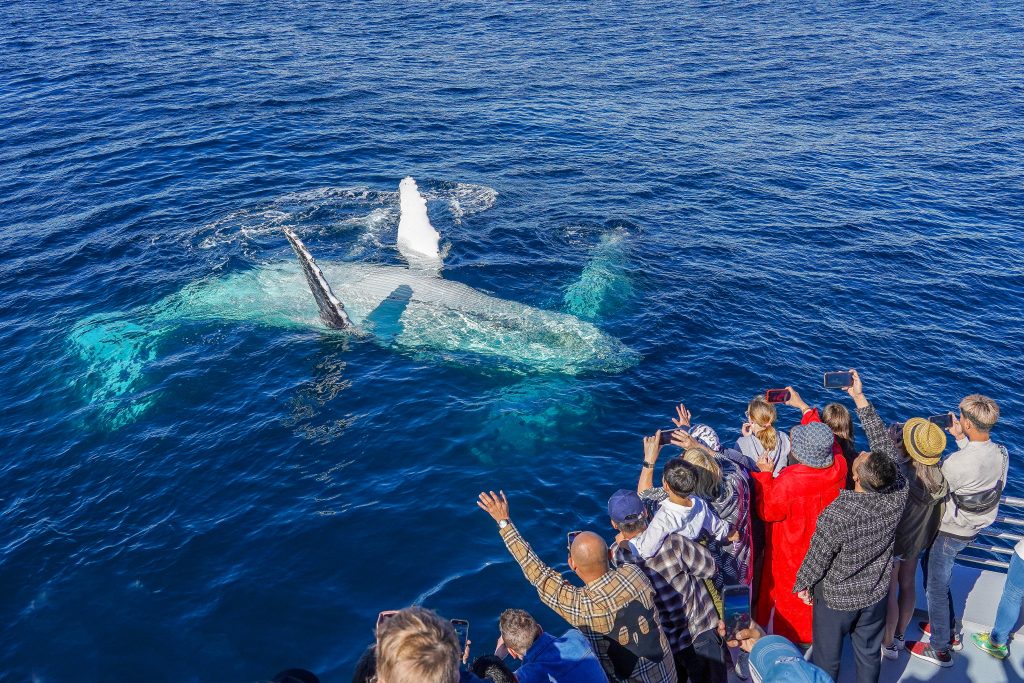
The beauty of encountering and experiencing a mugging is that the whale intends to approach and interact with the vessel, not the other way round. It is, indeed, one of the biggest privileges that you can experience out at sea—to capture the imagination of a wild, highly intelligent whale. So, as a responsible boater, it is important that you go slow around marine creatures, be respectful, and follow your local regulations.
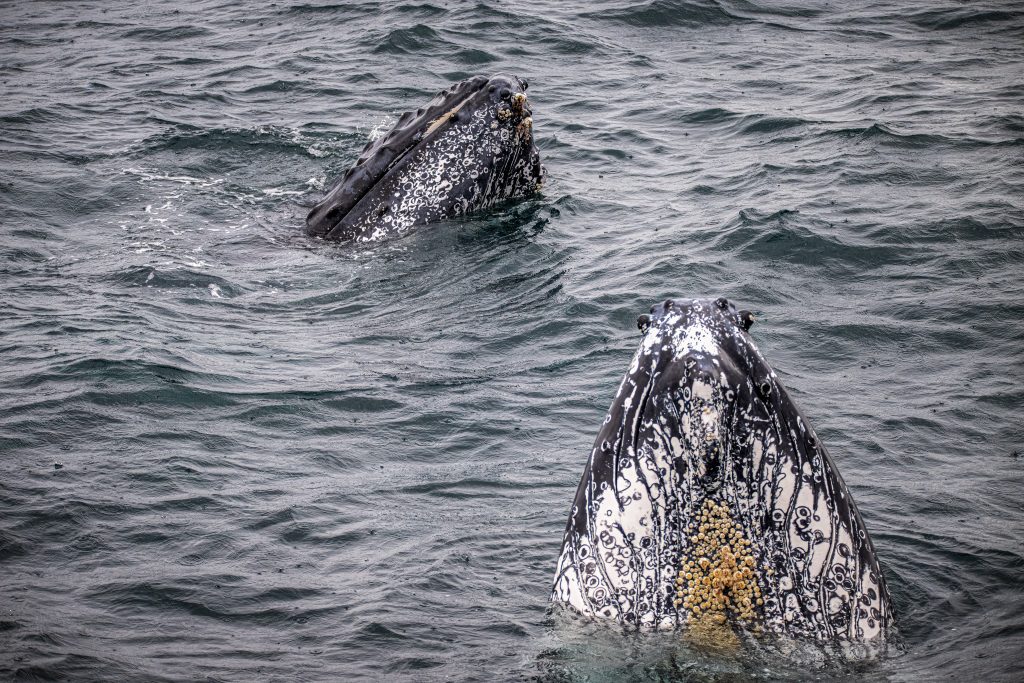
Further Reading:
Clapham, P.J. 2000. The humpback whale. cetacean societies, field studies of dolphins and whales. Chicago: The University of Chicago.
Corkeron, P.J. 1995. Humpback whales (Megaptera novaeangliae) in Hervey Bay, Queensland: Behaviour and responses to whale-watching vessels. Canadian Journal of Zoology 73(7): 1290–1299.
Department of Environment and Heritage. 2006. Australian national guidelines for whale and dolphin watching, 2005. Canberra: Department of Environment and Heritage, Government of Australia.
